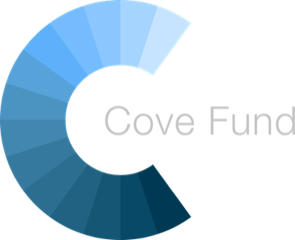What Makes a Startup Pitch Stand Out? Insights from Cove Fund Limited Partners
At the Cove Fund, we see hundreds of startup pitches each year — from founders across Southern California and beyond. The sheer volume means that standing out is not about flashy slides or big market claims. It’s about substance, clarity, and a team that inspires confidence. We recently asked several of our Limited Partners — all experienced investors who regularly participate in screening and due diligence — what makes a pitch stand out to them. Their answers revealed common themes that separate good pitches from great ones.
1. It Starts With the Team
Time and again, the first thing our LPs mentioned was the founding team. A great pitch always begins with a leader — or leadership team — that demonstrates clarity, confidence, and deep domain expertise. It’s not enough to be passionate. The most compelling founders can communicate not only what they are building, but why they’re the right people to build it.
One LP put it plainly: “A strong founder with a well-oiled story, who has a strong team with expertise in their area.” Another added, “A compelling pitch always starts with a management team that deeply understands the problem they are solving.” Investors want to hear from people who’ve lived the problem, not just studied it. Founders who’ve been in the trenches — or have surrounded themselves with others who have — gain instant credibility.
What matters most isn’t resumes; it’s demonstrated insight and execution capability. Has the team identified the right early hires? Do they understand their gaps? Do they show leadership maturity beyond their years? These are traits that turn a good pitch into an investable opportunity.
2. A Clear, Cohesive Story
Even the best ideas can be lost in a rambling pitch. One LP told us, “A clear, articulate story and a team that has clearly thought through all the potential problems in their business.” That’s a big one. Clarity of story reflects clarity of thinking — and investors look for that discipline.
A well-crafted pitch isn’t just about communicating excitement; it’s about explaining how the company will win, and why now is the right time. Great pitches walk investors through the problem, the market, the product, and the path to scale without hand-waving or jargon. They anticipate the hard questions — about competition, business model, and capital needs — and tackle them head-on.
3. Realism with a Side of Optimism
A successful startup pitch balances vision and realism. As one LP summarized, they’re looking for the “combo of realism and optimism.” Founders who acknowledge the challenges ahead — without letting them overshadow the opportunity — stand out from the crowd. There’s a big difference between a starry-eyed founder and a grounded one who says, “Here’s what we’re tackling, here’s where the risks lie, and here’s how we’re planning to address them.”
This blend is especially valuable in early-stage investing, where few things are certain. An overly optimistic pitch can feel naïve. An overly cautious one might lack ambition. The magic is in showing that you’ve mapped the terrain and still believe you can climb the mountain.
4. Strategic Advantage Matters
Another key element our LPs look for is some form of strategic moat. That could be intellectual property, a hard-to-replicate business process, or a strong early customer pipeline. As one LP noted, “Great management team, industry experience, good moat (IP, strategic advantage, etc.).”
Early-stage companies rarely have dominant market positions — but they can and should demonstrate some edge. Maybe it’s proprietary technology, maybe it’s a unique data asset, maybe it’s access to a hard-to-reach customer segment. Whatever it is, the best pitches communicate why this team has an advantage, and why that advantage will compound over time.
5. A Deep Understanding of the Landscape
Finally, a standout pitch must reflect a realistic understanding of the broader market context. That includes competitors, adjacent players, regulatory dynamics, and the pace of innovation. One LP summed it up: “Strong leadership team understanding of the landscape and the associated opportunities/issues, from a realistic perspective.”
Too many pitches skip the competitive slide or handwave it with “we have no real competitors.” That’s a red flag. In contrast, the strongest founders are able to tell a thoughtful, nuanced story about where their product fits — not just today, but over the next 3–5 years. They’ve thought through pricing, distribution, and what happens when a well-capitalized incumbent takes notice.
Final Thoughts
In the end, it’s not a single factor that makes a pitch stand out — it’s the alignment of many elements: a capable team, a clear story, thoughtful realism, and a differentiated edge. At Cove Fund, we’re not looking for perfection, but we are looking for clarity of thought, depth of insight, and signs of strategic execution.
Startups don’t need to have all the answers. But the ones that stand out are the ones who show they’ve asked the right questions.
About Us
Cove Fund is a seed-stage venture capital fund based at UC Irvine’s Beall Applied Innovation, a hub for Southern California entrepreneurs and investors. We invest in early-stage technology and life science companies with differentiated products that address large markets and can achieve major milestones with seed funding.
Since our inception, we have invested over $20 million and are actively deploying capital from our $24 million third fund. If you are a Southern California startup seeking funding — or an investor interested in becoming a limited partner — visit us at www.covefund.com.
